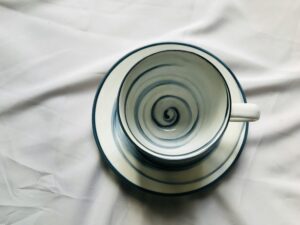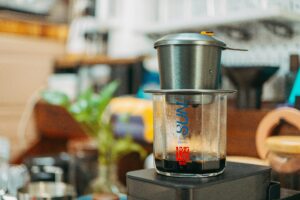Coffee is a universal language. It connects people across cultures, comforts us during early mornings, fuels our ambitions, and sparks our creativity. Among the many iconic variations of this beloved beverage, one stands out for its creamy texture and rich cultural heritage — Con Leche Coffee.
Table of Contents
Also known as “Café con Leche,” this Spanish-origin drink has made its way into homes and cafes across the world, captivating coffee lovers with its simple yet indulgent blend. But what exactly is Con Leche Coffee, and why has it remained so popular throughout the years? Let’s explore the origin, preparation, cultural significance, and everything else you need to know about this milky masterpiece.
The Origins of Con Leche Coffee
Café con Leche, which translates to “coffee with milk” in Spanish, has its roots in Spain. It was traditionally enjoyed during breakfast and is still a staple in many Spanish-speaking countries, including Cuba, Puerto Rico, and various regions across Latin America. Over time, this comforting beverage has evolved and adapted to suit regional preferences while maintaining its core identity — a harmonious balance of strong brewed coffee and hot milk.
Unlike a latte or cappuccino, which are often made with espresso and frothy milk, Café con Leche typically uses equal parts strong brewed coffee (sometimes espresso) and steamed milk, without the foam. It’s known for its velvety texture and robust flavor that’s smoothened out by the milk, making it a perfect choice for those who like their coffee strong but not bitter.
How is Con Leche Coffee Made?
While every family or barista might have their own spin on how to make Café con Leche, the traditional preparation is fairly straightforward. The essential ingredients are:
- Freshly brewed strong coffee (often made with a stovetop espresso maker or moka pot)
- Warmed or steamed milk
The ratio is usually 1:1, but it can be adjusted based on personal taste. Some people prefer a stronger coffee flavor and go with a 2:1 ratio of coffee to milk, while others enjoy a more delicate taste and reverse the proportions. Sugar is optional, but it’s commonly added in many Latin cultures for a slightly sweet profile.
The preparation is as important as the ingredients. Coffee is typically brewed strong and served piping hot. The milk is heated separately — not boiled — just enough to make it warm and creamy. Once both elements are ready, they are combined in a large cup, usually with the coffee poured in first and then the milk.
Cultural Significance of Café con Leche
In many Spanish-speaking countries, Café con Leche is more than just a beverage — it’s a daily ritual. It’s the first thing many people drink in the morning, often served alongside toasted bread, butter, or pastries. In Cuban households, for example, a traditional breakfast includes Café con Leche with Cuban toast (pan tostado). Children are even introduced to a milder version made with more milk than coffee, making it a generational bonding experience.
The beverage also carries emotional weight. It reminds many people of home, of mornings spent with grandparents, or of slow, quiet moments before the hustle of the day begins. Even in cafés across the United States and Europe, ordering a Café con Leche brings a sense of warmth and nostalgia that few other drinks can match.
The Difference Between Con Leche Coffee and Other Milk-Based Coffees
You might wonder how Con Leche Coffee differs from other popular coffee drinks like the latte, cappuccino, or flat white. While they all contain coffee and milk, the difference lies in their ratios, texture, and preparation techniques.
- Latte: Made with espresso and a larger amount of steamed milk, often topped with a light layer of foam.
- Cappuccino: Equal parts espresso, steamed milk, and foam, giving it a frothier and lighter mouthfeel.
- Flat White: Similar to a latte but with less milk and a smoother texture due to microfoam.
- Café con Leche: Typically equal parts strong brewed coffee and hot milk, no foam, and a bolder flavor profile due to the coffee base.
What makes Café con Leche unique is its simplicity and adaptability. You don’t need an espresso machine or barista skills to enjoy it — just a love for strong coffee and creamy milk.
Variations Across the Globe
As Con Leche Coffee spread across different regions, it adopted new names and slight variations. In Cuba, it’s common to make it with Cuban espresso and evaporated milk, giving it a rich and sweet twist. In Puerto Rico, it might be served with a touch of cinnamon or nutmeg. In the Philippines, a similar drink is called Kapeng Barako con Leche, made with robust local beans and condensed milk for sweetness.
In the United States, especially in cities with large Hispanic populations like Miami, New York, or Los Angeles, Café con Leche is a café staple, often served in diners and coffee shops alongside pastries or empanadas.
How to Make Con Leche Coffee at Home
You don’t need fancy equipment to prepare this comforting drink at home. Here’s a basic method to make Café con Leche:
- Brew the Coffee: Use a stovetop espresso maker, French press, or drip machine to brew a strong coffee. Aim for a dark roast for the most authentic taste.
- Heat the Milk: Gently warm whole milk in a saucepan or use a milk frother to steam it. Avoid boiling as it changes the flavor.
- Combine: In a large mug, pour in the brewed coffee, then add an equal amount of hot milk. Stir gently.
- Optional: Add sugar to taste. For a twist, sprinkle a bit of cinnamon or nutmeg on top.
Experiment with ratios and milk types — some people prefer almond, oat, or soy milk for a dairy-free version.
Why You Should Try Con Leche Coffee
There’s something incredibly satisfying about a cup of Con Leche Coffee. It offers the richness of coffee with the smoothness of milk, striking a balance between intensity and comfort. Whether you’re starting your day or winding down, this drink fits perfectly into any routine. It’s also a gateway for people who are new to coffee or find black coffee too bitter, providing a more approachable and flavorful experience.
Moreover, Café con Leche is an embodiment of hospitality and tradition. Serving it to guests is a gesture of warmth and welcome, and sharing it can turn a regular morning into a memorable one.
FAQs About Con Leche Coffee
Q: Is Café con Leche the same as a latte?
No, while they are similar, Café con Leche uses strong brewed coffee instead of espresso and has little to no foam. Lattes are made with espresso and steamed milk, often with a layer of foam on top.
Q: Can I use non-dairy milk in Café con Leche?
Absolutely. Almond, oat, soy, or coconut milk can be used. Just make sure they are unsweetened if you want to control the sugar content.
Q: What’s the best coffee roast to use?
A dark roast works best as it holds up well to milk and provides the bold flavor that defines Café con Leche.
Q: Is it okay to add sugar?
Yes, sugar is commonly added to taste. In some cultures, sweetened condensed milk is used instead of regular milk for added sweetness.
Q: Can I make it iced?
Yes, for a refreshing twist, brew your coffee strong, chill it, and pour it over ice with cold milk.
Conclusion: A Hug in a Mug
Café con Leche is more than just coffee with milk — it’s a cultural symbol, a comfort drink, and an easy way to add a little indulgence to your day. Whether you’re sipping it in a Spanish café, enjoying it with breakfast at home, or making your own variation with oat milk and cinnamon, this classic beverage offers a world of flavor in every sip.
So the next time you’re craving something warm, rich, and satisfying, skip the complicated coffeehouse menu and go for a timeless favorite. Brew a strong coffee, heat some milk, and savor the magic that is Con Leche Coffee.








